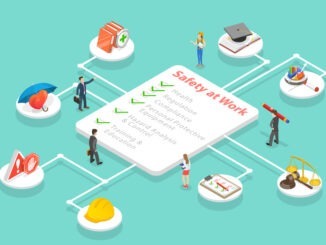
Many SBLs and school staff are raising concerns about the state of school buildings, citing various issues that negatively impact the learning environment for students
CREDIT: This is an edited version of an article that originally appeared on National Education Union
A recent survey conducted by the National Education Union (NEU) sheds light on the challenges faced by educators due to building conditions. Over 8,000 NEU members participated in the survey, sharing their experiences and observations regarding the state of school, college, and nursery buildings.
Leaks and temperature control
One of the prominent issues highlighted in the survey is the prevalence of leaks from rain in school buildings. Approximately two-thirds of teachers (68%) reported dealing with leaks, with 10% describing the issue as severe. Moreover, a significant number of respondents (33%) expressed concerns about teaching in severely overheated conditions during summer, while 16% faced severely cold working conditions.
Disrepair and maintenance
The survey revealed that old buildings and unaddressed repair works contribute to increasingly difficult working conditions for both staff and students. Many educators voiced concerns about the ongoing disrepair and maintenance issues plaguing their workplaces.
Children are being taught in buildings that, according to 33% teachers, are severely overheated in summer. A further third say that it is a moderate issue in their workplace, with 19% describing it as a minor issue. This totals 85% affected, leaving just 15% who are happy with temperature control during summer months. Added to this, there are ventilation issues for a majority (58%).
It is concerning that one in six (16%) have to work in severe cold conditions during winter, with almost a third more (29%) saying that for them this is a “moderate” issue.
41% of teachers said there are signs of vermin or pests in their workplace, while over a quarter (29%) reported leaks of sewage or waste water.
45% of respondents report mould or damp in their workplace – conditions which are known to cause respiratory illness – with a fifth (21%) describing the mould or damp as moderate or severe.
Personal experiences
Teachers shared personal anecdotes highlighting the severity of building issues. From classrooms flooded during heavy rain to ceilings collapsing due to leaks, these accounts underscore the urgent need for infrastructure improvements in schools.
“My hands were bleeding during the cold spell earlier this year because the classroom was so cold. This is unhygienic and painful.”
“We have a ceiling leak that is causing severe damage that has been left for four years.”
“Our building is full of asbestos and is falling down. Pieces of the plaster/concrete on walls and ceiling regularly flake off.”
Commenting on the findings of the survey, Daniel Kebede, Joint General Secretary of the National Education Union, said:
“There are limits to a culture of ‘make do and mend’, and the line that should not be crossed is when it comes to our nation’s children. As this survey shows, pupils are routinely being taught in conditions that have a negative impact on their learning and could even impact their health.
“This is by no means the fault of school leaders, who are doing the best they can with the facilities and budgets they have. 70% of schools are financially worse off in real terms than in 2010. Leaks and ventilation are a chronic issue for many. The fact is that this Government has neglected school and college buildings for fourteen years.
“At the present rate of 50 schools per year, the Government’s School Rebuilding Programme will take 460 years to complete its work. That is many more generations of children to fail.
“This must change. We need to see a serious injection of new money into projects that will regenerate the school estate and ensure that asbestos, RAAC and time spent learning in portacabins are a thing of the past. If this Government was serious about education and the wellbeing of staff and students, then it would do so.”
The challenges highlighted in the survey underscore the immense pressure school business leaders face in managing limited resources while striving to maintain safe and conducive learning environments. Urgent action is needed to provide schools with the necessary support and resources to address building issues effectively.




Be the first to comment